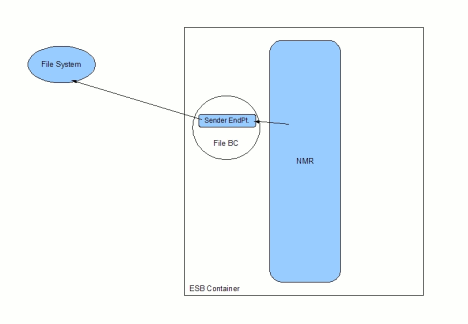Fuse 6 is no longer supported
As of February 2025, Red Hat Fuse 6 is no longer supported. If you are using Fuse 6, please upgrade to Red Hat build of Apache Camel.Chapter 11. Using Sender Endpoints
Abstract
Sender endpoints write messages to the file system.
Important
The Java Business Integration components of Red Hat JBoss Fuse are considered deprecated. You should consider migrating any JBI applications to OSGi.
11.1. Introduction to sender endpoints
Copy linkLink copied to clipboard!
Overview
Copy linkLink copied to clipboard!
The function of a sender endpoint is to write data, in the form of files, to a location on a file system. You can control the location of the files written to the file system and have some control over the name of the generated files. You can also control if data is appended to existing files or if new copies of a file are created.
By default, sender endpoints write XML data to the file system. You can change this behavior by configuring the endpoint to use a custom marshaler.
Where does a sender endpoint fit into a solution?
Copy linkLink copied to clipboard!
Sender endpoints play the role of provider from the vantage point of the other endpoints in the ESB. As shown in Figure 11.1, “Sender endpoint”, a sender endpoint receives messages from the NMR and writes the message data to the file system.
Figure 11.1. Sender endpoint
Configuration element
Copy linkLink copied to clipboard!
Sender endpoints are configured using the
sender element. All its configuration can be specified using attributes of this element.
Configuring a sender endpoint to use custom marshalers require the addition of other elements. These can either be separate
bean elements or child elements of the sender element.
